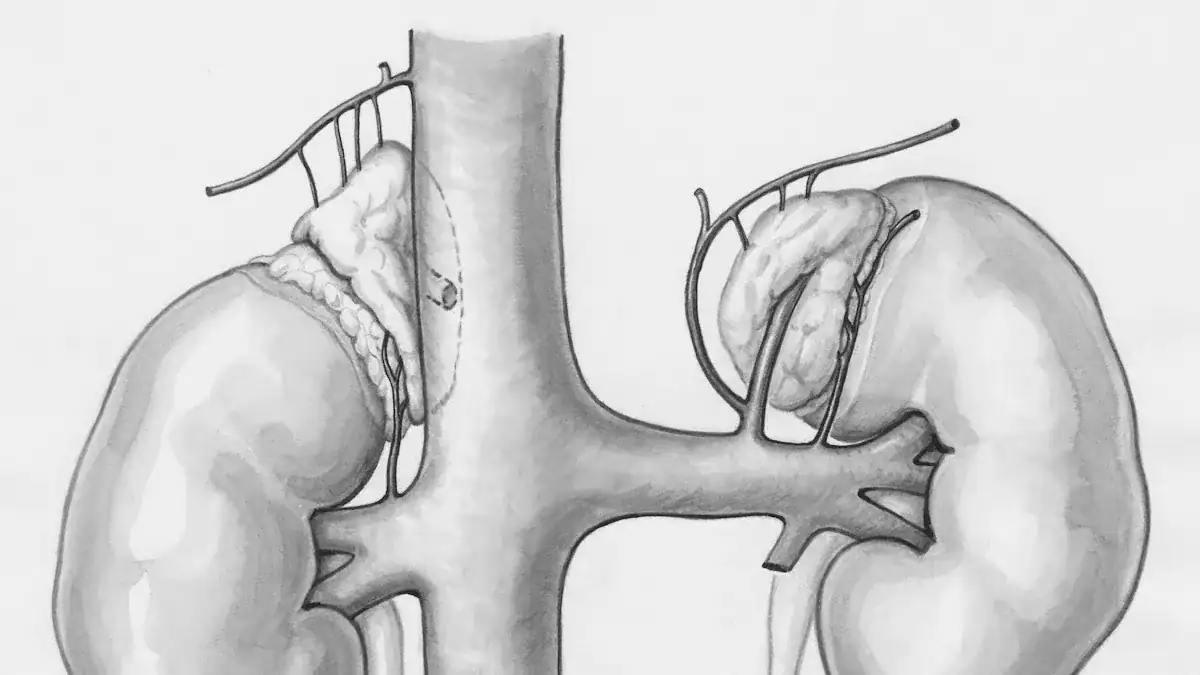
Pulsating or throbbing back pain can signal a medical emergency. This type of back pain feels like a rhythmic beat or intense pressure, unlike a constant dull ache. It demands your immediate attention. Our goal is to help you understand when this symptom requires immediate medical care.
We will discuss its urgent causes. For instance, an abdominal aortic aneurysm is a serious medical condition. It often causes lower back pain. You might also feel a pulsating mass in your abdomen. Never self-diagnose. Seek professional medical evaluation for any concerning pain or red-flag symptoms. This is a medical emergency.
Key Takeaways
Pulsating back pain can be a sign of a serious health problem. It feels like a rhythmic beat or strong pressure.
Conditions like an abdominal aortic aneurysm, cauda equina syndrome, spinal infections, or tumors can cause this pain. These need quick medical help.
Look for other serious signs with back pain. These include numbness, weakness, problems with going to the bathroom, fever, or unexplained weight loss.
If you have severe pulsating back pain, especially with other urgent signs, get medical help right away. Call 911 or go to an emergency room.
Abdominal Aortic Aneurysm: A Pulsating Sensation

Aneurysm Definition
An abdominal aortic aneurysm (AAA) is one of the life-threatening causes of pulsating back pain. It occurs when the walls of the aorta in the lower part of your body weaken and bulge outward. This forms an aneurysm. The aorta is your body’s largest blood vessel.
It carries blood from your heart to the rest of your body. An AAA is a condition where an area of the aorta in your abdomen becomes significantly enlarged. It can resemble a balloon.
Pulsating Pain Characteristics
You might feel a pulsating sensation in your abdomen. This can be a key warning sign. Some people describe it as a strong pulse in the mid-upper left side of the stomach. This feeling can become stronger when you lie on your left side. It might also come with tenderness.
The pain can be so intense it takes your breath away. This pulsating sensation often radiates to your back, causing pulsating back pain.
Other Critical Symptoms
Beyond the pulsating back pain, other critical symptoms signal a medical emergency. You might experience severe abdominal pain. This pain is deep and continuous. It often occurs between your sternum and belly button. It does not get better with rest.
This abdominal pain can also spread to your low back, groin, or legs. You may notice a palpable, sensitive, pulsating mass in your abdomen. Low blood pressure is another sign. It causes lightheadedness, dizziness, or confusion. Symptoms of shock can also appear. These include a rapid heartbeat, shallow breathing, clammy skin, or cold sweats. These are all signs of an emergency. If you experience these symptoms, call 911 immediately. This is a medical emergency.
Risk Factors
Several factors increase your risk for an abdominal aortic aneurysm. Older age, especially over 65, is a major factor. Being male also increases your risk. Tobacco use, like cigarette smoking, is a primary cause.
It can speed up aneurysm growth. High blood pressure and unhealthy cholesterol levels also contribute. A family history of AAAs makes you more likely to develop one. Other conditions like atherosclerosis, coronary artery disease, and peripheral artery disease are also risk factors. You should discuss these with your doctor.
Cauda Equina Syndrome: A Spinal Medical Emergency
Syndrome Overview
Cauda equina syndrome (CES) is a serious medical condition. It involves damage to the bundle of nerves called the cauda equina. These nerves sit below the end of your spinal cord. This condition requires urgent surgical intervention. You must act quickly to prevent permanent damage. Cauda equina syndrome is a true medical emergency.
Pain Manifestation
Pulsating or throbbing back pain can be a part of cauda equina syndrome. This pain often comes with sharp, severe back pain. You might feel this intense pain in your lower back. It can also radiate down your legs. This nerve pain is distinct and concerning.
Neurological Red Flags
Cauda equina syndrome presents several critical neurological red flags. You might experience decreased sensation in your legs, pelvic area, or bottom. This is known as saddle anesthesia or paresthesia. You may have difficulty feeling yourself wipe after using the bathroom. You might also feel a heaviness or numbness in your pelvic region.
Bladder and bowel dysfunction is another key sign. This includes difficulty in passing urine, urinary retention, or even incontinence. You might not feel yourself urinate or defecate. Leg weakness or numbness is common. You could stumble, trip, or find your legs giving out.
You may also experience sciatica, which is pain radiating down both legs. Other signs include new onset sexual dysfunction and changes in sensation below the waist. You might also notice reflex abnormalities or muscle weakness in your legs. This type of sciatica is a serious symptom.
Causes and Action
Several factors can cause cauda equina syndrome. A herniated disk is a common cause. Tumors, infections, and fractures can also lead to it. Narrowing of the spinal canal, known as spinal stenosis, is another cause. Trauma or direct injury to your lower spine can also trigger this condition.
If you experience severe back pain along with saddle numbness, sciatica, or difficulty in passing urine, seek immediate medical attention. This is an emergency.
Spinal Infection or Tumor: Urgent Causes
Spinal infections and tumors are serious conditions that can cause persistent, throbbing back pain. Because these issues may progress quickly, prompt medical evaluation and diagnosis are essential.
Types of Spinal Infections
A spinal infection can cause severe pain and inflammation. Common types include:
- Vertebral osteomyelitis: An infection of the vertebrae (the spinal bones), most often in the lower back.
- Intervertebral disc space infections: Affect the discs between the vertebrae. These can occur spontaneously or after spinal surgery.
- Spinal epidural abscess: An infection in the space surrounding the spinal cord, frequently located in the lower back.
- Subdural and intramedullary abscesses: Less common, these affect the layers around the spinal cord or the spinal cord tissue itself.
The rate of spinal infections has been rising, making awareness and early diagnosis especially important.
Spinal Tumors
A spinal tumor may be either primary (originating in the spine) or metastatic (spreading from another part of the body). Tumors often cause deep, constant, and throbbing back pain that:
- Persists throughout the day and night
- Does not improve with rest or typical pain medication
- Gradually worsens over time
- Is often more intense at night due to sleeping posture or reduced physical distraction
Pain and Systemic Symptoms
Both spinal infections and tumors may cause symptoms beyond back pain:
With Spinal Infection:
- Fever and chills (though fever occurs in only about 55% of cases)
- General feeling of illness and fatigue (malaise)
With Spinal Tumor:
- Persistent or worsening pain, especially at night
- Unexplained weight loss
Possible Systemic Symptoms for Either Condition:
- Muscle spasms
- Painful urination
- Muscle weakness
- Bowel or bladder dysfunction
- Rapid heart rate
These signs indicate the condition may be affecting nerves or other body systems and requires urgent evaluation.
Risk Factors and Progression
Certain factors increase the likelihood of developing a spinal infection or tumor:
- Radiation exposure, including past radiation therapy
- Genetic conditions, such as Neurofibromatosis Type 1 or Type 2
- Weakened immune system, which raises the risk for both infections and certain tumors
Because these conditions can progress rapidly and may lead to permanent nerve damage, early medical intervention is critical.
Acute Trauma: When Back Pain Becomes Urgent

Trauma Impact
Acute trauma can cause sudden and serious back problems. This includes severe injuries like falls, car accidents, or direct blows to your back. Such trauma can lead to fractures in your spine. It can also cause severe muscle or ligament tears. Sometimes, internal organ damage occurs. These injuries can all result in urgent back pain.
Post-Injury Pulsating Pain
After an injury, you might feel pulsating or throbbing back pain. This type of pain can feel like a burning, pulsing, or electric sensation. This happens when nerves are injured. Sometimes, this pain does not appear right away. It can show up days later. This occurs as your body’s natural pain relievers wear off and inflammation starts. Mechanical back pain from injuries to bones, muscles, or nerves can also cause this shooting or electrifying pain. This is especially true when nerve injury is part of the trauma.
Internal Bleeding Signs
Pulsating back pain after trauma can sometimes signal internal bleeding. You might see bruising or swelling in the injured area. You could also feel dizzy or lightheaded. A rapid pulse is another sign. These symptoms, along with your back pain, mean you need immediate medical help. Internal bleeding is a serious emergency.
Emergency Care Needs
Any back pain you feel immediately after trauma needs urgent medical evaluation. You must seek emergency care if you experience severe or worsening pain after a recent trauma. This includes car accidents or falls. Other critical signs also require an emergency visit. You might lose sensation or movement in your legs or arms. You could lose control of your bladder or bowels.
Fever or chills can also be present. Numbness in your groin area is another red flag. Unexplained weight loss with back pain after trauma also needs attention. If your pain is unrelenting and rest does not help, seek help. This is especially true if you have a recent injury, are elderly, or have a history of cancer. People with a weakened immune system or those using steroids also need quick care.
Never ignore pulsating or throbbing back pain, especially with red-flag symptoms. Conditions like Abdominal Aortic Aneurysm, Cauda Equina Syndrome, spinal infections/tumors, and acute trauma are urgent causes. If you experience very severe abdominal or back pain with a pulsing sensation inside your stomach, call 911 immediately. This indicates a bursting aneurysm, a true medical emergency.




